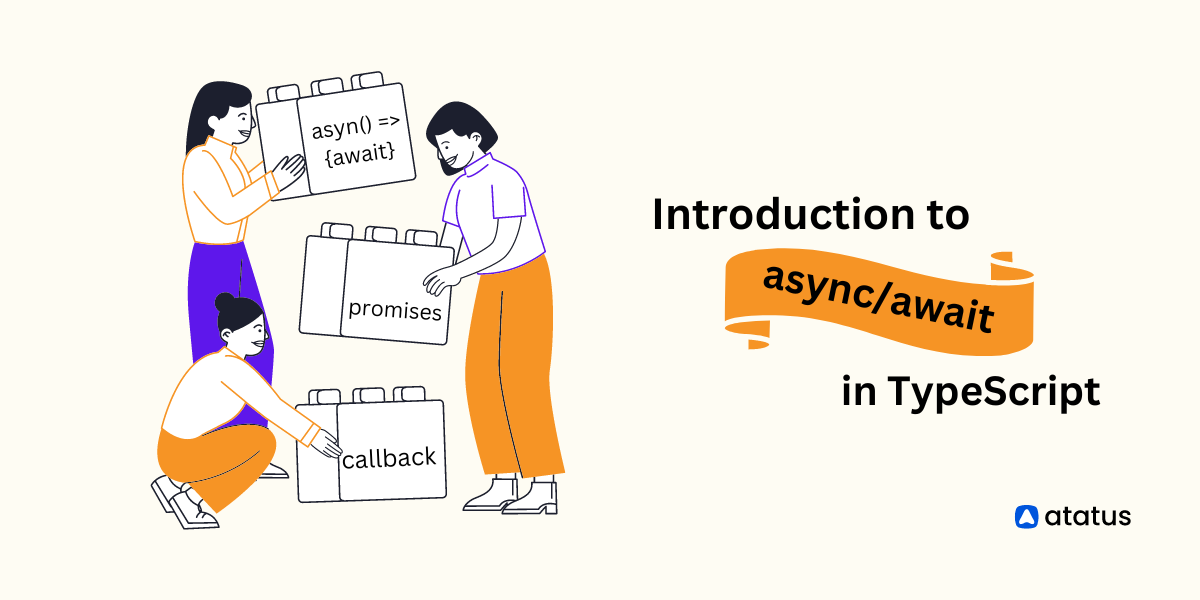JavaScript is currently one of the most popular programming languages on the internet. According to W3Tech, it is used as a client-side programming language by 97.4 percent of all websites. Mobile app development, web gaming, and desktop application development are some of the other domains where they can be used.
It's important to remember that JavaScript isn't a static language. On the contrary, it is continually evolving, with new frameworks and libraries being published on a daily basis. It can be difficult to select the ones that are most suited to your project.
We've put up a piece that covers the most popular Javascript frameworks and libraries to make things easier.
In this article, you will find:
- What is JavaScript Framework?
- What is JavaScript Library?
- 20 Popular JavaScript Frameworks and Libraries
What is JavaScript Framework?
Frameworks give developers the basic building blocks they need to create JavaScript applications. Using a functional base to get things started saves developers the time and effort of beginning from scratch.
In the case of JavaScript, this base consists of a set of code libraries. The libraries generate code that elicits specialized functionality for the type of application you're developing. The framework will, in essence, establish the structure of the entire application.
Each JavaScript framework has a distinct function. JavaScript is a reliable option for web development, and many of its frameworks are based on it. From start to finish, developing web applications and websites may be time-consuming. Web frameworks, or more accurately, JavaScript frameworks, take advantage of the fact that every website and web application has a set of properties in common.
In this sense, the term framework might be taken literally. Frameworks also serve as a skeleton for the general stability and shape of an outside framing in houses. Pre-written JavaScript code that generates routine programming features is rendered by JavaScript frameworks, which makes development easier.
What is JavaScript Library?
A JavaScript library is a set of functions that helps you build a website faster. There are many different libraries to choose from, and many of them have active communities that help to improve the functionality and support users.
In simple terms, a JavaScript library is a single file that can be included with your code and contains a variety of functions. A framework, on the other hand, is more opinionated about how you build your complete site and relies on several files. Frontend and backend code is frequently provided by frameworks. A JavaScript plugin enhances the functionality of a library. Plugins are dependent on libraries, whereas libraries are self-contained.
The conventional procedure is to download the library and place the files in your development directory. When developing without access to the internet or establishing a solo website for an internal network, this method makes sense. The interconnectedness of the web is what makes it so powerful. Use a Content Delivery Network (CDN) instead of just any host.
20 Popular JavaScript Frameworks and Libraries
- React.js
- AngularJS
- Ember.js
- Vue.js
- Svelte
- Express.js
- Next.js
- Gatsby
- Meteor.js
- Nuxt.js
- jQuery
- Bootstrap
- Modernizr
- Underscore.js
- Popper
- Lodash
- Polyfill
- Moment.js
- Anime.js
- D3.js
JavaScript frameworks list:
#1 React.js

React.js is a JavaScript framework created by Facebook that makes it easier to create interactive user interfaces. The success of React.js is due to a large community, Facebook support, saturated environments, increased efficiency, and reusable components. React.js is perfect for creating SPAs and cross-platform applications, as well as constructing small business applications. It serves as the foundation for React Native, a mobile app development framework.
The one-way data flow in both frameworks is deemed more intuitive than bi-directional data binding. Another popular feature of the React.js frameworks is hot reload, which allows developers to view changes as they are made.
Features:
- For the majority of devices, React.js creates a high-quality user interface.
- The React application is made up of multiple components, each of which has its own logic and controls.
- A unidirectional data flow is used by React.js.
- The JSX file is used by React.js to make the application easy to understand and code.
- It controls a virtual DOM and so delivers efficient performance.
#2 AngularJS

Google maintains AngularJS, which addresses typical issues in single-page application (SPA) development. On dynamic web pages, this framework works by leveraging HTML vocabulary. HTML could only be used for static material in the past.
The content for SPA is dynamically loaded from the web server rather than the web browser. As a result, SPA behaves similarly to mobile applications and does not require reloading.
Working with Angular is where a lot of JavaScript developers start their careers. The framework's adaptability is a crucial reason for Angular's success. Two-way data binding, dependency injection, CLI, directives, Typescript support, MVC, and more features are included.
Features:
- AngularJS comes with a built-in dependency injection, which makes it easy for developers to create, understand, and assess applications.
- The two-way data-binding in AngularJS handles synchronization between the DOM and the model, as well as the other way around.
- A number of built-in services are available in AngularJS.
- Templates in AngularJS are the rendered views that contain data from the controller and model.
- AngularJS has built-in directives.
#3 Ember.js
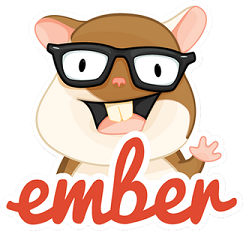
Ember.js is a component-service pattern-based JavaScript framework. Components in Ember.js are crucial to the framework, as opposed to the traditional model-view-controller (MVC) architecture. Almost all of Ember.js can be classified as a service or component.
Components are ephemeral and manipulate an application UI's markup text and styles. The term "service" refers to items that exist just for the length of an application. They are best used for persistent states and can be made available for various areas of your application.
Ember is a well-supported framework that is also extremely versatile and flexible. Ember and other essential tools may be used to create a comprehensive development stack.
Features:
- It's an MIT-licensed open-source JavaScript framework.
- It's used to create reusable and maintainable JavaScript web applications.
- HTML and CSS are at the heart of Ember.js' development methodology.
- Ember.js includes the Ember Inspector tool, which may be used to troubleshoot Ember applications.
- Ember.js makes use of templates to automatically update the model when the content changes.
#4 Vue.js

Vue.js calls itself - the “progressive” JavaScript framework. The term comes from the company's incremental adoption philosophy. Since the core library of Vue.js is solely focused on the view layer, any new functionality must be added in stages.
The Model-view-view model (MVVM) is the architectural pattern used by the framework. This pattern divides the graphical user interface (UI) – or view – from the application's business logic – or model. The view model layer is a data synchronization converter medium.
Due to its minimal framework size, extensive documentation, reactivity, reusability, TypeScript support, and exceptionally short learning curve, Vue.js has seen rapid growth. It is made up of a large number of unique elements. Vue.js is in strong demand in Asia right now, and it's ideally suited for creating modern, high-performance applications. Vue.js could be the ideal alternative if you need to make a quick prototype.
Features:
- Vue.js makes use of a virtual DOM.
- The data binding functionality in Vue.js allows you to manipulate and assign values to HTML properties, change the style, and give classes, among other things.
- Components are a major feature of Vue.js that allows you to create custom elements that you may reuse in HTML.
- V-on is a Vue.js attribute that has been added to DOM elements to allow them to listen to events.
- Vue.js provides HTML templates that perform DOM binding to Vue.js instance data.
#5 Svelte

Svelte, a free and open-source front-end compiler maintained by the Svelte core team, was created by Rich Harris. Framework references are not included in svelte applications. Building a Svelte application, on the other hand, generates code to manipulate the DOM, which may minimize the size of transferred files and improve client setup and run-time performance.
At build time, Svelte has its own compiler for turning app code to client-side JavaScript. It's written in the TypeScript programming language. Svelte's purpose is to make it easier for developers to write less code by allowing them to create components using HTML, CSS, and JavaScript. Svelte apps, like React ones, are truly reactive, which means you don't have to control the DOM directly: the view is immediately changed as the state changes.
The fundamental distinction between Svelte and all other prominent JavaScript frameworks is that it pushes the majority of the processing to a compilation stage. Svelte is designed on a compiler that evaluates your application's code before emitting a tiny, quick, and optimized code bundle, rather than relying on huge and complex libraries loaded at run time.
Features:
- Svelte is a modern JavaScript framework for creating fast, lean, and enjoyable static web applications for developers.
- Svelte may be used to create single, reusable components for any project, including larger applications developed in Angular, React, Vue, or any other frameworks
- When compared to Angular or React, Svelte stands out for its ability to build smaller code bundles that run faster in the browser.
- HTML, CSS, and JavaScript blocks are used to create Svelte components. Scripts have a similar feel to "vanilla JavaScript," and markup is defined with regular HTML tags.
#6 Express.js

Express.js, or simply Express, is a back-end web application framework for Node.js that was distributed under the MIT License as free and open-source software. It is intended for the development of web applications and APIs. It's been called Node.js' de facto standard server framework.
TJ Holowaychuk is the creator of Express.js. According to the Express.js GitHub repository, the initial release was on May 22nd, 2010. Express, together with the MongoDB database software and a JavaScript front-end framework or library, is the back-end component of popular development stacks like MEAN, MERN, or MEVN.
Features:
- Single-page, multi-page, and hybrid web applications all can be created with Express.js.
- It enables middleware to respond to HTTP requests to be configured.
- It establishes a routing table that is used to carry out various operations based on the HTTP method and URL.
- It allows you to render HTML pages dynamically by passing arguments to templates.
#7 Next.js

Next.js is a React framework that allows you to create single-page and multi-page JavaScript applications and websites. It's an open-source web framework that integrates optimal web development techniques into the framework, allowing developers to create Jamstack as well as server-based applications. It's a more advanced web framework that sits on top of Node.js and React.
For Web, Desktop, and Mobile devices, it supports both static and server-side rendering. It has capabilities such as automatic code splitting, client-side routing, and compatibility with Express and other Node.js HTTP servers.
Features:
- It ensures optimal server-side rendering, as well as strong SEO support and a speedy start-up time.
- It provides automated code splitting and efficient file routing based on the system.
- It has built-in CSS support and allows for simple data retrieval.
- Built-in domain and subdomain routing, as well as automatic language detection.
- Real-time analytics score that displays visitor data and insights per page.
#8 Gatsby
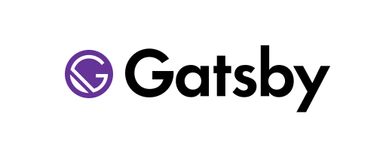
Gatsby, often known as GatsbyJS, is a React-based framework for quickly building static websites and applications. A static website is a collection of interconnected HTML pages that display the same content to all viewers in the same order. They don't connect to a database to request new data.
Gatsby is a one-stop-shop for creating static websites. It lets you specify your website's content, routing, and linking, as well as pull data from a variety of sources to create a static site on demand. Despite the fact that Gatsby is still relatively new, its popularity has resulted in tremendous community expansion.
It's a lightweight static site generator that may be used to create e-commerce sites, landing pages, and progressive web applications, among other things. To avoid costs and memory leaks, Gatsby employs GraphQL.
Features:
- To optimize sites, automatic code-splitting, inlining styles, image optimization, lazy loading, and other techniques are used.
- During the build process, its serverless rendering generates beautiful HTML. As a result, there are no server or DDoS attacks or malicious requests.
- Improved web accessibility.
- There are almost 2000 plugins, themes, and recipes available.
- With Gatsby, you can create high-performing React webpages and applications.
#9 Meteor.js

Meteor.js is regarded as one of the most widely used JavaScript back-end frameworks. The goal of this JavaScript framework is to speed up back-end development and knowledge acquisition. For this reason, front-end developers can use Meteor to work on the backend without switching between languages like Python or PHP.
It allows you to use a single language in all of the required places. It enables you to create full-stack applications for mobile, desktop, and web with ease.
Features:
- Integrate tools and frameworks like MongoDB, React, Cordova, and others for extra functionality.
- Develop applications for any platform.
- APM to see how well your application is performing
- Reloading the browser in real-time.
- Isomorphic Development Ecosystem (IDevE) is an open-source development ecosystem that makes it easier to start from scratch.
#10 Nuxt.js

Nuxt.js is a web application framework based on Vue.js, Node.js, Web pack, and Babel.js that is free and open source. Nuxt.js is inspired by Next.js, a React.js-based framework with a similar objective. The framework is billed as a "universal application meta-framework."
The term "universal" refers to the framework's goal of allowing users to create web views in JavaScript using the Vue.js single file component system that can be used as both in-browser single page application (SPA) views and server-rendered web views that can then be "rehydrated" to full SPA functionality.
Furthermore, the framework allows users to have content entirely pre-rendered on the server and provided in the same way that static site generators do. Due to the fact that the whole contents of each page are served by the webserver before any client-side JavaScript is executed, this technique has several advantages over SPAs, including reduced time to interaction and improved SEO.
Features:
- Set up an auto-updating server to make development easier.
- The Nuxt.js framework simplifies and streamlines the configuration and setup of such applications for the application developer.
- Server-side rendering, automatically generated routes, enhanced meta tag management, and SEO optimization are all great development features.
- Render your Vue applications statically and enjoy all of the benefits of a universal application without the need for a server.
- Set up transitions between your routes with ease.
JavaScript libraries list:
#11 jQuery

jQuery is a JavaScript library that makes traversing and manipulating the HTML DOM tree, as well as event handling, CSS animation, and Ajax, easier. It's open-source software that's free and uses the liberal MIT License. jQuery is utilized by 78 percent of the 71 million websites as of July 2021.
According to web analysis, it is by far the most extensively used JavaScript library, with at least 3 to 4 times the usage of any other JavaScript library. The syntax of jQuery is intended to make navigating a document, selecting DOM components, creating animations, handling events, and developing Ajax applications easier.
Developers can use this to create abstractions for low-level interaction and animation, complex effects, and themeable widgets at a high level. The jQuery library's modular design enables the building of sophisticated dynamic web pages and Web applications.
Features:
- It has a simple and straightforward API.
- CSS3 selectors are used to manipulating style properties and find elements.
- jQuery is small, requiring only 30 kb to gzip and minify, and includes an AMD module.
- Beginners will find it simple to learn because its syntax is comparable to that of CSS.
- Flexibility due to an API that works with a variety of browsers, including Chrome and Firefox.
#12 Bootstrap
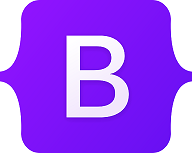
Bootstrap is an HTML, CSS, and JS library aimed at making the creation of informative web pages easier as opposed to web applications. The main reason for including it in a web project is to apply Bootstrap's colour, size, font, and layout selections to that project. As a result, the most important factor is if the developers in charge like the options.
Bootstrap provides basic style definitions for all HTML components once it is applied to a project. As a result, texts, tables, and form components look the same across all web browsers. Developers can also use the CSS classes supplied by Bootstrap to further alter the appearance of their contents.
In the form of jQuery plugins, Bootstrap also includes various JavaScript components. They offer features like dialogue boxes, tooltips, and carousels to the user interface. Each Bootstrap component has an HTML structure, CSS declarations, and, in certain circumstances, JavaScript code to go with it. They also make certain current interface elements more functional.
Features:
- Bootstrap may be used by anyone with a basic understanding of HTML and CSS.
- Bootstrap may be easily combined with a variety of other platforms and frameworks.
- Bootstrap uses pre-styled components for notifications, dropdowns, and navigation bars, among other things.
- All current browsers are compatible with Bootstrap.
- Bootstrap may be adjusted to fit the look and feel of your project.
#13 Modernizr

Modernizr is a JavaScript library that identifies the ability that a user's browser has to provide. By telling the user that their browser isn't supported or loading a polyfill, web pages can avoid using unsupported functionalities. Modernizr strives to deliver feature detection in a consistent and user-friendly manner, avoiding the usage of risky browser sniffers.
Instead of analysing the browser's properties, Modernizr employs feature detection to determine what a browser can and cannot perform. Since the same rendering engine may not support the same things in two distinct browsers that use that engine, it considers feature detection to be more reliable. Furthermore, some people change their user agent string to bypass websites that limit features for browsers with specified user agent settings, despite the fact that their browsers have the necessary capabilities.
Features:
- It's a fairly straightforward tool to use.
- It saves time by removing the need to create unique templates for each browser.
- This is an excellent library for determining which features are supported by various browsers and devices.
- Modernizr enables us to design browser-agnostic solutions, preventing erroneous behavior in our applications and web pages.
#14 Underscore.js

Underscore.js is a JavaScript library that offers typical programming tasks with utility functions. It has characteristics similar to Prototype.js and the Ruby programming language, but instead of extending object prototypes, it uses a functional programming approach. Underscore.js is described in the documentation as "the tie to go with jQuery's tux and Backbone.js' suspenders”.
Underscore.js was built by Jeremy Ashkenas, the creator of Backbone.js and CoffeeScript. Underscore encourages a functional approach, in which numerous functions are joined in a single expression to provide additional functionality. Underscore's set of functions, on the other hand, has been carefully selected to minimize such effort, allowing the user to assemble functionality from pre-existing functions rather than writing her own.
Features:
- It offers many of the same capabilities as Prototype.js, except instead of object prototype extensions, Underscore uses functional programming.
- It has about 100 functions that are divided into four categories based on the data types they process. These are objects, arrays, and other functions manipulation functions.
- Underscore works with a variety of browsers, including Chrome, Firefox, and Edge.
#15 Popper
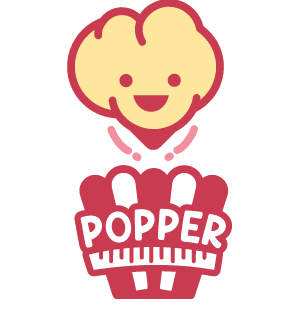
Popper.js is a 3 KB JavaScript library with no dependencies that provides a dependable and extendable positioning engine for ensuring all of your popper pieces are in the appropriate spot. Spending time configuring tiny elements may not seem necessary, but these small details are what make you stand apart as a developer, and they don't take up much space.
If you're not sure what a popper is, imagine a small thinking bubble exploding from an element. Popper.js allows you to arrange them, make them adhere to elements, and keep them running smoothly on any screen size.
Features:
- When you scroll inside the scrolling containers, the tooltip remains attached to the reference element.
- Configurability on a higher level.
- Writes UIs with strong libraries like Angular or React, making integrations a breeze.
#16 Lodash

Lodash is a JavaScript library that uses the functional programming paradigm to provide utility functions for common programming tasks. It is based on the earlier underscore.js library. It was released in 2013 and makes working with numbers, arrays, texts, objects, and other data easier.
Lodash comes with a number of built-in utility methods that make writing JavaScript code easier and cleaner. Rather than writing the same functions over and over, the work can be completed with just one line of code.
Features:
- Lodash and its programming concepts are explained in a simple and straightforward manner.
- There are several functions in Lodash that reimplement syntactical operators as functions.
- We can use the pick tool to choose specific properties from a target object.
- We can get the head and tail of a list without using utility functions by using destructuring syntax.
#17 Polyfill
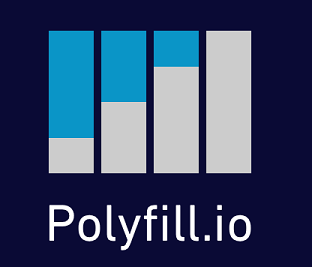
A polyfill is a JavaScript library that implements an HTML5 or CSS web standard, either an established standard (supported by certain older browsers) or a proposed standard (not supported by any browsers) on current browsers. "A polyfill is a shim for a browser API," according to the definition. It's code that makes a feature work in web browsers that don't support it.
Polyfill allows web developers to use an API with minimal overhead regardless of whether the browser supports it. They usually check if a browser supports an API and utilize it if it is accessible, else they use their own implementation. Since polyfill rely on other, more widely supported features, various polyfill may be required for different browsers.
Features:
- A polyfill is a code that adds current functionality to older browsers that don't support it natively.
- Polyfill are used to solve problems where various browsers implement the same features differently.
#18 Moment.js

Moment.js is a JavaScript library that makes it simple to parse, validate, manipulate, and display date/time in JavaScript. Moment JS allows you to display dates in a human-readable way based on your location. Moment.js can be used in a browser using the script approach. It's also compatible with Node.js and can be installed via the npm package manager.
You may find numerous simple ways to add, subtract, validate dates, retrieve the maximum and minimum dates, and so on in Moment.js. It's an open-source project, so you can easily contribute to it, add functionality in the form of plugins, and publish it to GitHub and Node.js.
Features:
- It enables you to parse the date in the desired format.
- On the moment object, there are several methods for manipulating Date and Time.
- Moment.js has a number of useful features, like durations.
- Moment.js is used to show Date and Time based on the user's location.
#19 Anime.js

Anime.js is one of the most versatile and user-friendly animation libraries available. It's the ideal tool for adding some seriously fantastic animation to your project. It may be readily incorporated into your applications and works well with CSS properties, SVG, DOM attributes, and JavaScript Objects.
The built-in staggered method in anime simplifies complex follow-through and overlapping animations. It can be applied to timings as well as properties. On a single HTML element, you can animate numerous CSS transform attributes with different timings at the same time. Using the built-in callbacks and controls routines, you can play, pause, control, reverse, and trigger events in sync.
Features:
- Works with a variety of browsers, including Chrome, Safari, Firefox, Opera, and others.
- Its source code is simple to understand and use.
- Complicated animation techniques like overlapping and staggered follow-through are simplified.
#20 D3.js
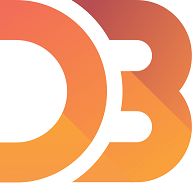
D3.js (short for Data-Driven Documents) is a JavaScript library that allows you to create dynamic, interactive data visualizations in web browsers. SVG, HTML5 , and CSS are all used. It is the successor to the Protovis framework from before.
To select components, create SVG objects, style them, or add transitions, dynamic effects, or tooltips to them, the D3.js library uses pre-built functions. CSS can also be used to style these objects. To construct text/graphic charts and diagrams, large datasets can be connected to SVG objects using D3.js functions.
Features:
- D3.js allows for sophisticated data visualizations.
- Makes use of a data-driven technique to change the DOM.
- D3.js is a rapid animation and interaction framework that supports a wide range of dynamic behavior and datasets.
- It lowers overhead, allowing for greater graphics complexity at high frame rates.
Conclusion
The goal of this article was to identify the most popular JavaScript libraries and frameworks for software development in 2021 and beyond. For your web application, you now have a wide range of technologies to pick from. Your final decision is based on your specific business needs and project requirements.
Atatus provides web and mobile app developers with practical, real-time analytics to diagnose, improve, and optimize their products through APM, RUM, Log, and Infra Monitoring. To try it out, sign-up for a 14-day free trial of Atatus.




